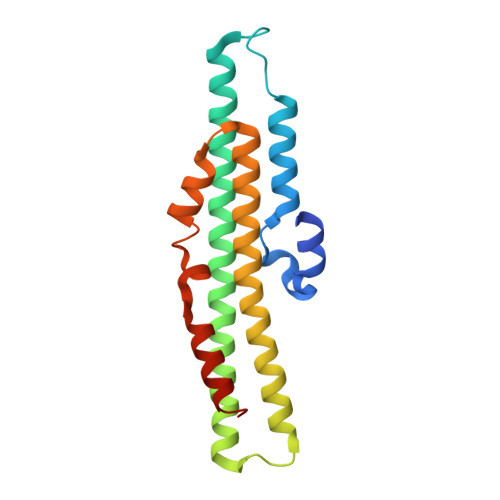Homeostatic coordination of cellular phosphate uptake and efflux requires an organelle-based receptor for the inositol pyrophosphate IP8.
Li, X., Kirkpatrick, R.B., Wang, X., Tucker, C.J., Shukla, A., Jessen, H.J., Wang, H., Shears, S.B., Gu, C.(2024) Cell Rep 43: 114316-114316
- PubMed: 38833370
- DOI: https://doi.org/10.1016/j.celrep.2024.114316
- Primary Citation of Related Structures:
8TYU, 8TYV - PubMed Abstract:
Phosphate (Pi) serves countless metabolic pathways and is involved in macromolecule synthesis, energy storage, cellular signaling, and bone maintenance. Herein, we describe the coordination of Pi uptake and efflux pathways to maintain mammalian cell Pi homeostasis. We discover that XPR1, the presumed Pi efflux transporter, separately supervises rates of Pi uptake. This direct, regulatory interplay arises from XPR1 being a binding partner for the Pi uptake transporter PiT1, involving a predicted transmembrane helix/extramembrane loop in XPR1, and its hitherto unknown localization in a subset of intracellular LAMP1-positive puncta (named "XLPVs"). A pharmacological mimic of Pi homeostatic challenge is sensed by the inositol pyrophosphate IP 8 , which functionalizes XPR1 to respond in a temporally hierarchal manner, initially adjusting the rate of Pi efflux, followed subsequently by independent modulation of PiT1 turnover to reset the rate of Pi uptake. These observations generate a unifying model of mammalian cellular Pi homeostasis, expanding opportunities for therapeutic intervention.
Organizational Affiliation:
Inositol Signaling Group, Signal Transduction Laboratory, National Institute of Environmental, Health Sciences, Research Triangle Park, NC 27709, USA.














